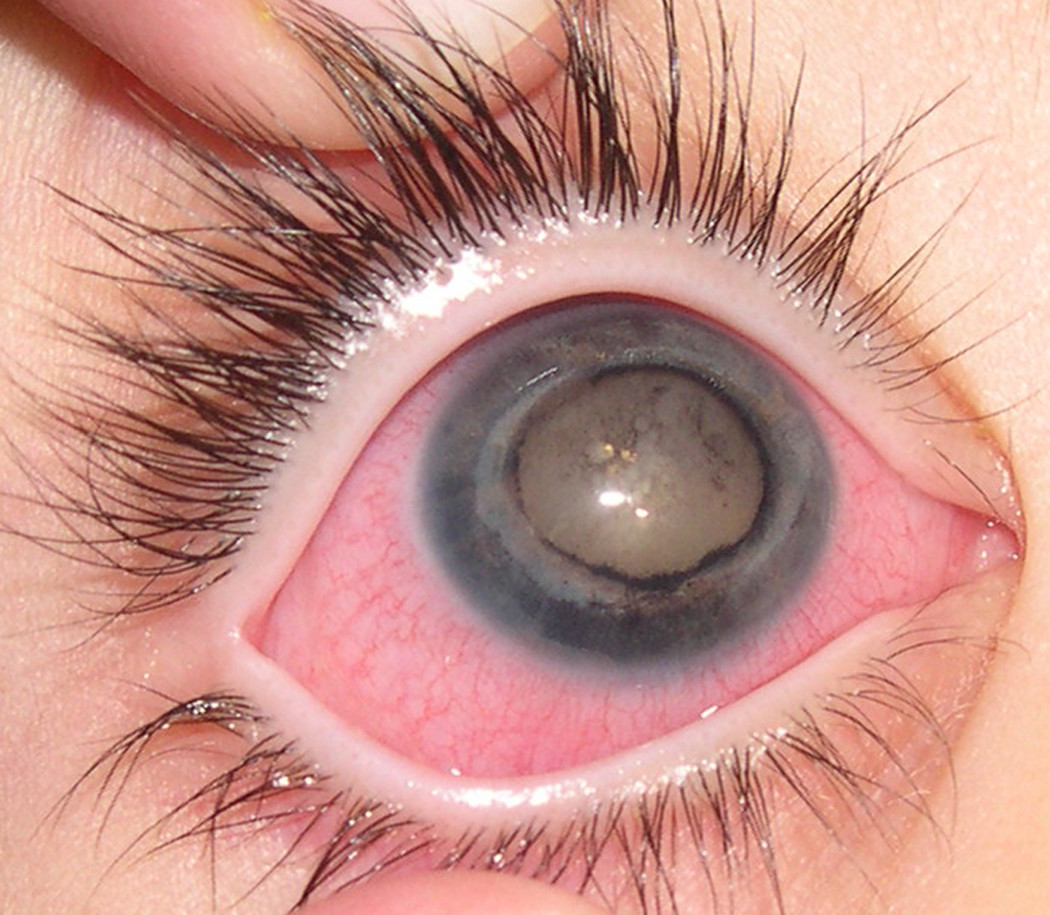Coats Disease

Coats disease (CD) is an idiopathic disorder characterized by retinal telangiectasia with deposition of intraretinal or subretinal exudates, potentially leading to retinal detachment and unilateral blindness. CD is classically an isolated and unilateral condition affecting otherwise healthy young children.
Epidemiology
Annual incidence is <1/1,000,000 in the UK, approximately 80% of cases occur in males.
Clinical description
CD onset predominantly occurs in male children between 6 and 8 years old. Early stages of the disease are generally asymptomatic and evolution is variable. As children with unilateral vision loss usually do not complain of symptoms, the diagnosis is often based on an abnormal appearance of the pupillary reflex that can best be seen in photos or on red reflex testing. Other common presentations include the onset of strabismus or failure of a school vision screening examination. Ophthalmoscopy reveals unilateral retinal telangiectasia and aneurysms of the retinal vasculature. This is followed by exudation of fluids producing yellow subretinal deposits. The most advanced stages of CD include total retinal detachment, leukocoria and painful glaucoma secondary to angle closure.
Etiology
An abnormal permeability of capillary endothelial cells in the retina, along with abnormal pericytes, causes the retinal vascular leakage that is the hallmark of CD. CD is not heritable, however, somatic mutations in the Norrie Disease Pseudoglioma, NDP, gene have been hypothesized to play a role in the pathogenesis of CD.
Diagnostic methods
Diagnostic methods include indirect ophthalmoscopy, fluorescein angiography, ultrasonography, computerized tomography scanning and magnetic resonance imaging.
Differential diagnosis
Retinoblastoma (see this term) is the most important differential diagnosis. B-scan ultrasound and MRI with gadolinium contrast aid in distinguishing between late stage CD and solid tumors. Others include familial exudative vitreoretinopathy, Von Hippel-Lindau disease, intermediate uveitis and incontinentia pigmenti which are more often bilateral, as well as the more typically unilateral conditions such as ocular toxocariasis and persistent hyperplastic primary vitreous (see these terms).
Management and treatment
Treatment depends on severity of disease. Mild peripheral vascular abnormalities may be followed with serial fundus photography. When exudation is present, ablation of incompetent vessels and avascular retina should be performed using laser or less often, cryotherapy. More advanced cases can require surgical intervention for retinal reattachment, such as scleral buckling, or laser photocoagulation combined with pars plana vitrectomy and removal of the vitreous membrane. Intravitreal corticosteroid as well as anti-VEGF agents have been used as adjuvant therapies.
Prognosis
The majority of cases stabilize with proper therapy, although exudation and macular scarring commonly compromise vision. A retrospective study showed that 16% of patients had a final visual acuity of 20/50 or better and 47% had hand motions to no light perception in the affected eye. Approximately 20% of eyes may require enucleation.